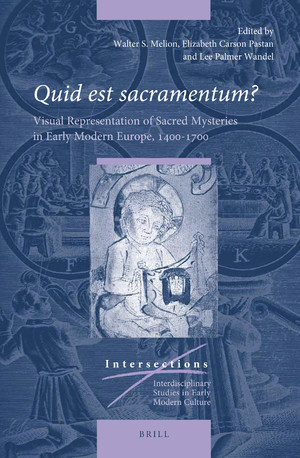AnnMarie M. Bridges
Media of all kinds have the capacity not only to inform, but to transform. As a recent graduate of Harvard University’s Committee on the Study of Religion, I ask, how exactly do individual media—in particular, texts—shape and reshape us through our interactions with them?
Many religious texts are explicitly engaged in an attempt to re-form their readers. As such, they provide a rich archive for exploring this question, which can only be pursued at the intersection of the history of the book and reading, material culture, and media studies. My work examines how Christian theological texts frame their reader’s vulnerability to change through reading and charts the literary strategies whereby texts exploit that malleability to instill new ways not only of thinking, but also of sensing, feeling, and behaving.
In my dissertation, which I defended in March 2020, I show how John Calvin’s 1559 Institutio Christianae Religionis acts to correct its reader’s distorted perception—especially her visual perception—and to instill patterns of thought designed to discipline and condition subsequent perception. The Institutio, which is perhaps the most influential single text to emerge from Europe’s sixteenth-century religious reformations, was composed in a period of acute uncertainty in early modern visual culture. My dissertation reinterprets the text’s famously puzzling visual themes against this backdrop. It demonstrates that both the Institutio’s content and its distinctive form are designed to intervene in and re-form its readers’ habits of visual perception.
My first publication, a contribution to “Quid est sacramentum? Visual Representation of Sacred Mysteries in Early Modern Europe, 1400-1700,” was released in fall 2019. The volume appears in Brill’s interdisciplinary Intersections series. My chapter, “‘In the Flesh a Mirror of Spiritual Blessings’: Calvin’s Defence of the Lord’s Supper as a Visual Accommodation,” discusses Calvin’s efforts to secure the visual dynamics of the sacrament against accounts he takes to threaten it.
For the 2020-2021 school year, I will be a Visiting Fellow at Harvard University’s Graduate School of Arts and Sciences (GSAS), where I will continue to pursue my research in connection with the Committee on the Study of Religion.
In 2019, I was honored to receive a Merit Fellowship from Harvard University. The award funds student research that has received the highest rankings within each department. I also spoke on a panel I organized at the Renaissance Society of America conference, entitled “Beyond Matter/Spirit: Rethinking Materiality and Signification in Early Modernity.”
In 2018, I received a grant from the Early Modern Conversions Project for a monthlong research stay at McGill, where I developed a new project on Calvin’s use of mirror imagery. I also joined the University of Colorado at Boulder’s Center for Media, Religion and Culture—first as a visiting Research Fellow and now as a Resident Fellow—where I am regularly presenting my research.
I hold an M.Div. from Harvard Divinity School and a B.A. from The University of Chicago.



